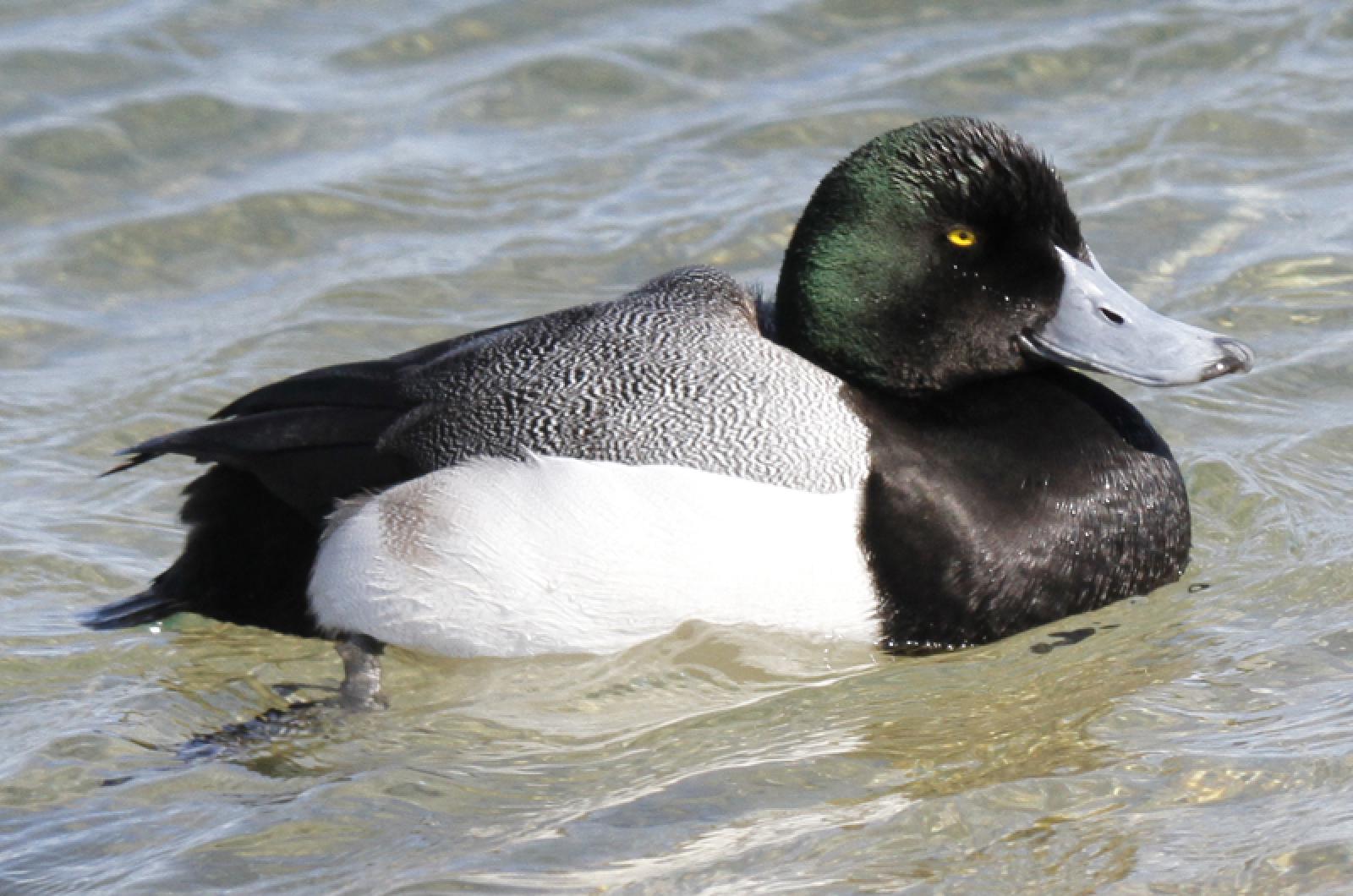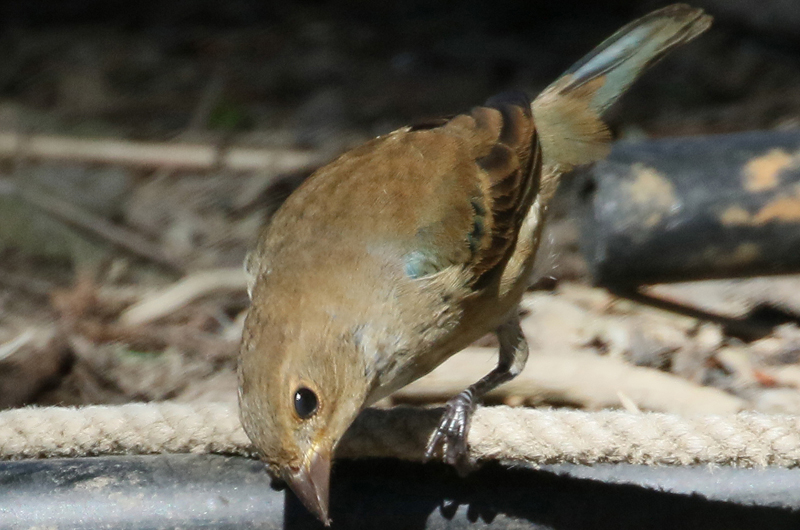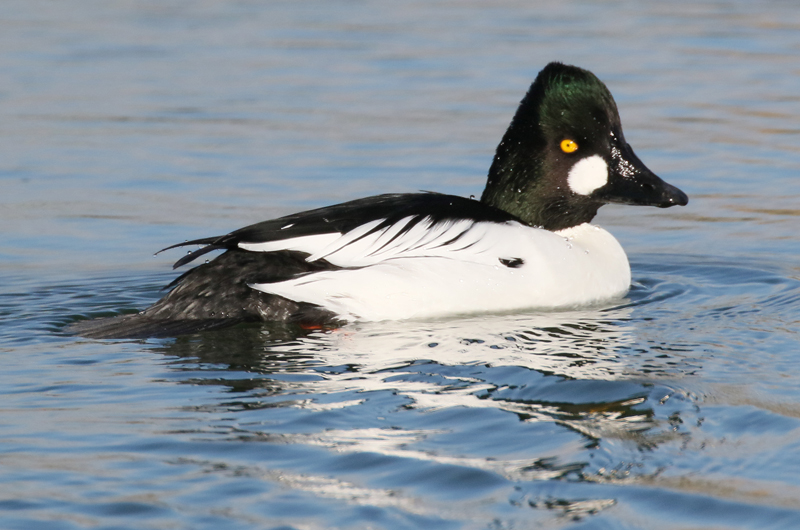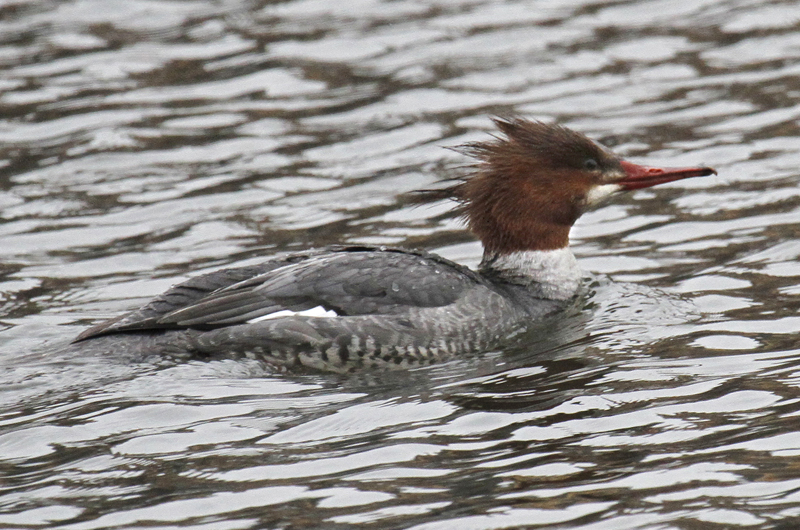Feeder reports can be very exciting. Of course, they usually consist of chickadees, nuthatches, titmice and woodpeckers, with occasional wrens and sparrows. But watching them can lead you to exciting finds.
A male winter-plumage indigo bunting was photographed at an Indian Hill Road feeder on Jan. 6. The bird is weird-looking with scattered patches of blue on an otherwise medium warmish brown finch body. Their closest wintering grounds are in southern Florida, although there are quite a few December records from New Jersey to Newfoundland, including one on Nantucket’s Dec. 31 Christmas Bird Count. Two were spotted again the next day. These Nantucket birds were the latest date for this species in Massachusetts, but that record did not last long as our bunting is now the latest date.
Bird Sightings
Anne Lemenager and Danny Whiting report an immature bald eagle flew across Oak Bluffs Harbor early in the morning of Jan. 8. Crows were in hot pursuit of the eagle and there were lots of waterfowl there as well.
“Perfect start to the day” says Ms. Lemenager.
Jeremy Provost also spotted an immature eagle high in the air over the Head of the Lagoon, which is one of the more regular places to spot an eagle. Others to spot this eagle were Catherine Deese and Betty Burton, who finally succeeded when an eagle flew through her yard
John Nelson checked out those harbor ducks over the weekend — he found 80 greater scaup, and numerous bufflehed, common goldeneye, common eiders, and red-breasted mergansers. On nearby East Chop he found a flock of 16 robins in a cedar tree, and then he spotted a sharp-shinned hawk flying rapidly past him about one foot off the ground. He also found four horned larks at State Beach on Jan. 7.
Last week I reported that David Stanwood found an eastern phoebe on New Year’s Day near his Lambert’s Cove Road home. Well, that bird is still around, as neighbor Marion and Simon Hickman found the bird again on the afternoon of Jan. 7. It is a pretty hardy bird to make it through the cold weather we have had recently.
Happy Spongberg reports that a hermit thrush visited her bird bath on Jan. 7, having a long leisurely bath in the steaming water station.
On the owl front, a barn owl was found and photographed by Judy Klumick as it was hunting and catching a small mammal for its dinner along Atlantic Drive in Edgartown on Jan. 7. This sighting is more evidence of an increasing population of barn owls. We are lucky that this winter has not had deep snow (yet), as it was the combination of several months of deep snow and cold temperatures that wiped out most of the Island’s barn owls a few winters back.
Randy Rynd reports hearing a great horned owl calling near the Land Bank’s Wapatequa Woods Reservation on Jan. 1. I am particularly interested in hearing about these reports, even if it is a single bird calling. Of course a dueting pair would be even more interesting as that would strongly suggest a breeding pair. January is the peak time for them to call, as that is part of their courtship and territory dance — they will be laying their eggs sometime in February. While that sounds early, their slow-growing youngsters will be learning how to hunt when food is most plentiful in the summer. The only other time she has heard great horned owls there was on Oct. 12, 2013.
Several observers have also reported a female common merganser in Menemsha Channel. This is a great opportunity to see this elusive species up close, and to distinguish it from the abundant red-breasted mergnasers. The distinguishing field mark for the common merganser is the sharp line separating the brown head from the white chest.
Last but not least, many observers monitoring their feeders report lots of chickadees, titmice, dark-eyed juncos, northern cardinals, downy and red-bellied woodpeckers, white-breasted nuthatches, and song sparrows. Carolina wrens are less frequently mentioned. These species come to my feeder, but I was surprised the other day to see a hairy woodpecker at our suet feeder. We had not observed this species at our feeder in more than a decade. I have not gotten any reports of red-breasted nuthatches; have you seen them?
Our many winter residents are here. Please report your sightings in this new year to birds@mvgazette.com.
Robert Culbert is an ecological consultant living in Vineyard Haven.











Comments
Comment policy »